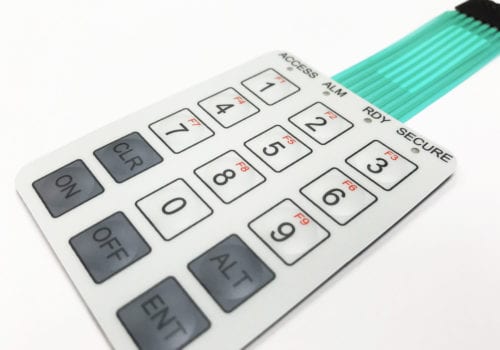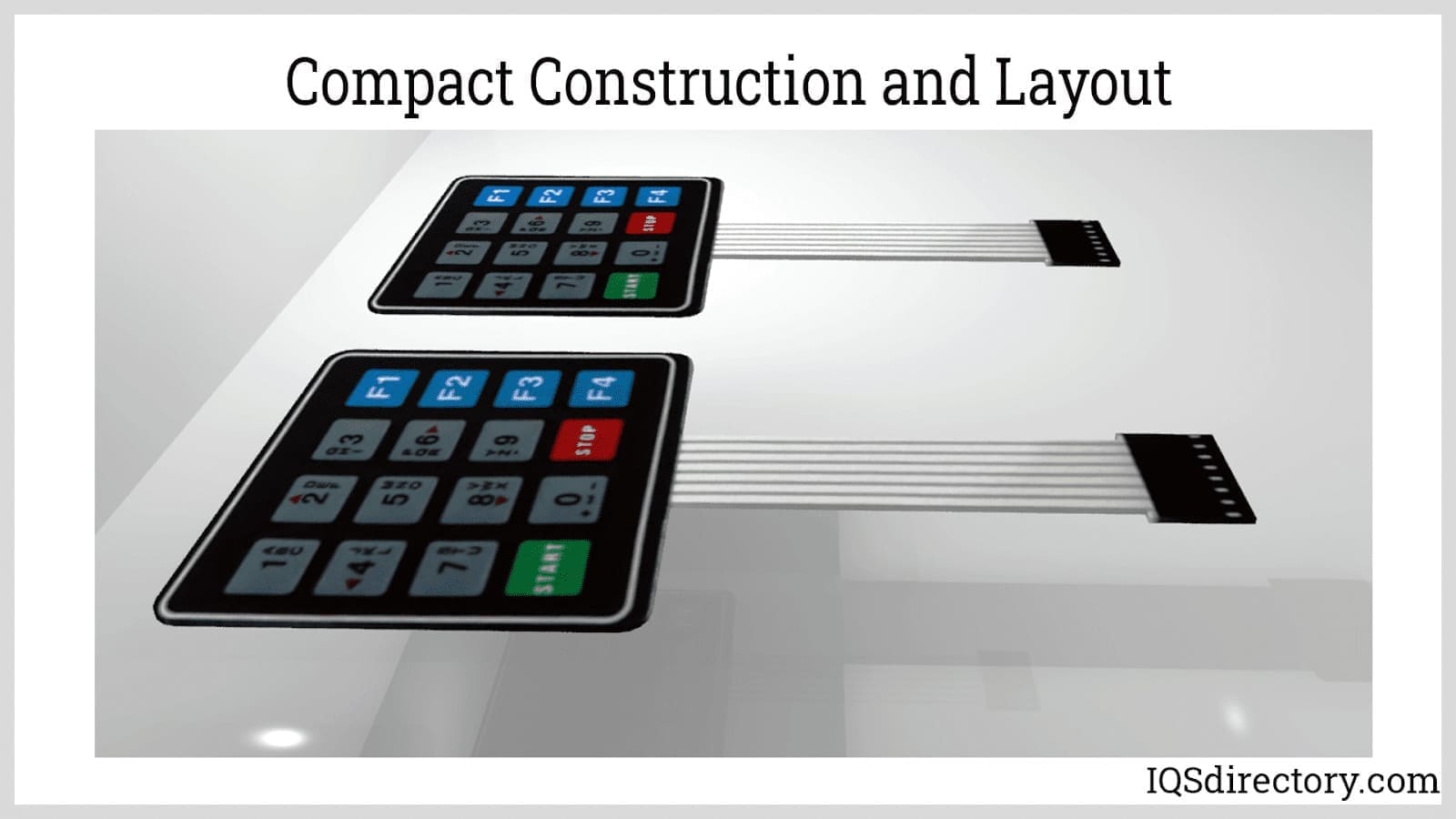Membrane Layer Switches Explained: A Comprehensive Guide to Their Benefits
Membrane switches over stand for a sophisticated and functional option for creating individual interfaces throughout a range of sectors. As markets increasingly seek dependable and efficient control interfaces, comprehending the certain benefits and applications of membrane layer changes ends up being important.
What Are Membrane Switches?

When stress is put on the membrane switch, the layers make contact, finishing an electrical circuit. This easy device permits for a variety of applications, from consumer electronics to commercial equipment. Membrane buttons are typically developed to be water resistant and immune to dust and impurities, making them suitable for settings where sturdiness is crucial.
In addition, the flexibility of the products utilized in membrane layer changes helps with innovative layouts that can adjust to different forms and measurements. This flexibility adds to their popularity in diverse fields, including clinical devices, automobile controls, and home devices. In general, membrane changes stand for a vital element in modern-day interface innovation, connecting the gap between individuals and digital systems.
Secret Advantages of Membrane Switches
Amongst the myriad of individual interface choices readily available, membrane layer switches over stick out for their one-of-a-kind combination of advantages. One of the primary benefits is their lightweight and small style, which permits for combination right into a vast array of tools without including considerable mass. This is particularly useful in applications where room is limited.
In addition, membrane switches over deal longevity and resistance to environmental factors. They are typically constructed with materials that can withstand dampness, dirt, and different chemicals, making them appropriate for extreme problems. This resilience adds to a much longer life-span contrasted to traditional mechanical switches.
An additional significant advantage is the adaptability in personalization. Membrane buttons can be published with different graphics, colors, and textures, enabling tailored layouts that fulfill specific branding or useful demands. This adaptability reaches the number of layers and circuit alternatives, giving designers with several setups.
In addition, the responsive feedback provided by some membrane layer switches enhances customer experience, making them a lot more intuitive to run. The convenience of cleaning and maintenance better solidifies membrane layer switches as a sensible option in both customer and industrial applications. Overall, these crucial benefits make them a preferred solution for numerous designers and producers
Applications in Various Industries
How do membrane layer switches locate their place across varied markets? Their adaptability and functionality make them integral parts in markets ranging from health care to consumer electronic devices. In medical tools, membrane buttons are utilized for their convenience of cleansing and resistance to contamination, making certain hygiene in atmospheres where sterility is critical.
In the customer electronic devices market, these buttons give smooth, easy to use user interfaces that boost product looks while keeping toughness against deterioration. Automotive applications take advantage of membrane layer changes too, where they are utilized in dashboards and control panels, using reputable efficiency in tough problems.
Additionally, industrial machinery employs membrane layer buttons for control panels due to their robustness, ability to stand up to rough settings, and customizable styles that deal with certain operational requirements. The food industry leverages membrane switches for their simplicity of usage and resistance to spills, making sure operational performance in hectic settings.
Eventually, the versatility of membrane switches across these discover here diverse applications highlights their vital function in modern innovation, improving individual interaction while fulfilling industry-specific needs. Their continued development assures more integration right into emerging areas and ingenious items.
Style and Customization Alternatives
The design and personalization options available for membrane buttons are critical for tailoring user interfaces to satisfy certain customer requirements and aesthetic preferences. These switches can be developed in numerous shapes, sizes, and layouts, permitting seamless assimilation right into varied applications. The adaptability in layout means that manufacturers can produce distinct interfaces that boost use and preserve brand Go Here identification.
Customized textures, shades, and graphics can be related to the surface area of the membrane layer switch, offering a chance for branding and user involvement. Furthermore, backlighting options, such as LED illumination, can be included to enhance presence in low-light conditions, therefore improving capability.
Functional components can likewise be customized, including tactile comments and actuation force, which can be gotten used to suit various customer communications. The choice of products, such as polyester or polycarbonate, enables variations in resilience and ecological resistance, satisfying the certain demands of various sectors.
Ultimately, the extensive design and customization capacities of membrane layer switches make it possible for companies to produce visually attractive and user-friendly interfaces, making certain that their products satisfy both visual and functional needs properly. Membrane Switches.
Considerations for Implementation
Applying membrane switches requires careful factor to consider of various aspects to make sure optimal capability and individual experience. One of the main considerations is the intended application atmosphere. Elements such as exposure to moisture, severe temperatures, and chemical compounds can substantially affect the button's efficiency and longevity. Choosing products that endure these conditions is critical.

An additional essential aspect is the switch's style and design. Making certain that the tactile comments and actuation pressure align with customer assumptions enhances use. Performing individual screening can supply beneficial understandings right into the ideal layout.
In addition, compatibility with electronic parts should be evaluated. The button's circuitry must straighten with the overall system architecture, ensuring reputable signal transmission and reducing interference.
Moreover, manufacturing techniques and costs need to be evaluated. The selection in between customized styles and conventional models can influence both budget plan and lead time.
Lastly, take into consideration repair and maintenance. Membrane buttons may require particular cleansing and care procedures to keep their appearance and capability in time. By dealing with these considerations, organizations can carry out membrane buttons that satisfy their operational requirements while giving a favorable customer experience.

Verdict
In conclusion, membrane changes represent a long lasting and versatile control user interface appropriate for a vast array of applications across numerous markets. Membrane Switches. As innovation continues to evolve, the significance of membrane buttons in modern-day tools remains significant, providing both capability and click this site aesthetic allure.
Membrane switches over represent a advanced and functional service for producing user interfaces throughout a variety of industries.Comprehending the essential components of modern electronic user interfaces, membrane layer buttons are a kind of user interface device that are composed of versatile, thin layers of product. Overall, membrane layer switches stand for a critical element in modern-day individual interface modern technology, connecting the gap in between customers and electronic systems.
Among the myriad of individual interface choices available, membrane changes stand out for their one-of-a-kind combination of benefits.The design and personalization alternatives readily available for membrane buttons are essential for customizing interfaces to meet particular individual requirements and visual choices.
Comments on “Why Membrane Switches Are a Reputable Choice for Interface Solutions”